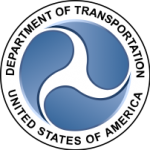Why does the interchange need to be improved?
How will the proposed project fix the problem?
What is a Project Study Report (PSR)?
Didn’t Caltrans already complete the work to design and build the interchange improvements?
Isn’t the EB I-80/Taylor Road exit to be closed?
Are there any anticipated impacts to the neighboring properties?
How long will it take to complete the project?
How can the public voice their opinion?
What other work is already underway in the vicinity of the I-80 & SR 65 corridors?
Why does the interchange need to be improved?
The existing I-80/SR 65 interchange was constructed in late 1985. Because of the region’s growth over the last two decades, the interchange and the I-80 and SR65 corridors are experiencing increasing congestion. The high traffic demands during commute hours and the weekend recreational trips congest the project area on a regular basis, causing unacceptable conditions.
How will the proposed project fix the problem?
The project is intended to reduce congestion, improve operations, and enhance safety.
The overall project consists of a number of steps or phases:
- Project Study Report (PSR)
- Project Approval & Environmental Document (PA&ED)
- Final Design and Right-of-Way Acquisition
- Construction
The environmental phase for the entire interchange was completed in 2016. We are currently in the design and right-of-way acquisition phase. The project is planned to be constructed in phases depending on availability of funding.
What is a Project Study Report (PSR)?
A PSR (also referred to as a Project Initiation Document) is a preliminary engineering report. It typically consists of a preliminary purpose and need statement, initial alternatives, system planning, potential environmental issues, traffic analysis, and estimated costs. The PSR’s main purpose is to start a project.
Once the PSR is approved, the project moves into the PA&ED phase. The PSR for this project was completed and approved in 2009.
What is the Project Approval & Environmental Document (PA&ED) phase and what will it accomplish?
During the PA&ED phase, more detailed studies including traffic analysis, environmental assessment, and public outreach will be prepared to further refine the information developed in the PSR. These additional studies will help to address key questions:
- What are the needs that the project will address?
- What are the goals or objectives for the project?
- What improvements are required to meet the needs and accomplish the goals of the project?
- What are the impacts of the improvements on the surroundings?
- How can we implement the needed project to minimize the impacts on the surroundings?
The two documents developed as part of this phase are a Project Report (PR) and an Environmental Document (ED). The PR studies the design improvements needed. The ED studies the impacts on the project’s surroundings and identifies mitigation necessary to avoid or minimize impacts. Together, they document decisions and recommendations for design and construction of the project and will:
- further identify the project’s need (problem) and purpose (solution),
- detail the results of the traffic analysis,
- analyze multiple alternatives and recommend one preferred solution,
- summarize environmental impacts and recommended mitigations,
- outline project scheduling and funding, and
- identify buildable construction project(s) for the available funds
After the PA&ED phase, the project will move forward to Final Design and Right-of-Way Acquisition. The PA&ED for this project was completed and approved in 2016.
Didn’t Caltrans already complete the work to design and build the interchange improvements?
No. Caltrans completed the first phase of the project development process – the PSR. The overall phases for the project and what is entailed is explained above.
Isn’t the EB I-80/Taylor Road exit to be closed?
No. PCTPA worked with Caltrans and local stakeholders to developed improvements that maintain the existing access at Taylor Road and I-80. The improvements that will be constructed maintain access to Taylor Road including the existing off-ramp on westbound I-80 and existing on-ramp on eastbound I-80. There are no plans to close the eastbound I-80/Taylor Road exit.
Are there any anticipated impacts to the neighboring properties?
Yes, the recently approved environmental document identified several adjacent pieces of properties that will need to be acquired to construct the proposed improvements. The project team coordinated extensively with the local businesses adjacent to the interchange over a six-year period to reduce potential project impacts. The exact amount of property needed will be determined during the design phase and no existing buildings will be impacted.
How long will it take to complete the project?
The environmental (PA&ED) phase of the project took six years, which is atypical schedule for this type of large infrastructure projects located in developed areas. It will take an additional 4-5 years to complete the design and construction phases. However, because of funding uncertainties, it is expected that the project will be designed and constructed in phases as money is available. The time to complete the overall project may take 20 years or more.
How can the public voice their opinion?
PCTPA conducted extensive outreach during the six-year environmental phase and held numerous community, public hearing, and stakeholder meetings. PCTPA will continue to provide information on this project website on the status of design and construction, and you can also sign up for email updates. The community can also contact PCTPA using project contact information provided on this website.
Why is PCTPA involved?
PCTPA is the regional transportation planning agency for Placer County. Its member jurisdictions are Auburn, Colfax, Lincoln, Loomis, Rocklin, Roseville, and Placer County (exclusive of the Tahoe Basin).
PCTPA is the project’s local sponsor because it is providing funding for the PA&ED phase. In 2005, PCTPA received $61.1 million for the I-80 Bottleneck project through Roseville. This project has realized significant savings during construction. The PCTPA Board reallocated this savings to a number of other I-80 interchange improvement projects. Approximately $4 million is available to this project for PA&ED. PCTPA retained the CH2M HILL consultant team to complete this work.
What role will Caltrans play?
Because the project is on the State Highway System, Caltrans is the project lead and the owner of the facility. They will be responsible for ensuring the PA&ED phase complies with federal/state requirements. PCTPA will also actively encourage input from local jurisdictions (Lincoln, Rocklin, Roseville, and Placer County), along with interested organizations and individuals.
What other work is already underway in the vicinity of the I-80 & SR 65 corridors?
I-80 Bottleneck Project
- Phase 1 — a 1-mile segment for an eastbound auxiliary lane between Riverside Avenue / Auburn Boulevard & Douglas Boulevard interchanges. Construction cost — $9.5 million. Completed 3 months ahead of schedule in August 2007.
- Phase 2 — a 2.8-mile segment for carpool and auxiliary lanes in both directions from Placer/Sacramento County line to Eureka Road. Construction Cost — $31.2 million. Started in May 2008 and was opened to the public in October 2011.
- Phase 3 — a 2.2-mile segment for auxiliary and carpool lanes in both directions from Eureka Road to about 1 mile east of SR 65. Construction cost — $45.3 million. Work was started in May 2009 and was opened to the public in October 2011.
I-80/Eureka Road Interchange Improvements
The City of Roseville is the project lead. Improvements were made to on- and off- ramps at Eureka and along Taylor & Sunrise. Construction cost — $9 million. Construction work began in 2011 and was completed in 2013.
SR 65 Lincoln Bypass
11.7-mile, four-lane facility west of the existing highway from Lincoln Boulevard to Sheridan. Project phasing is:
- Phase 1 – a 3.5-mile segment of 4-lane freeway from Lincoln Boulevard to Nelson Lane and 2 lane expressway from Nelson Lane to Sheridan. Construction cost — $290 million. Project was open to the public in October 2012.
- Phase 2A – extends the 4-lane freeway for 4.5 miles from Nelson Lane to north of West Wise Road. Construction cost — $23 million. The construction began in May 2012 and was open to the public in June 2014.
- Phase 2B – extends the 4-lane freeway for 3.7 miles from north of West Wise Road to Sheridan. This phase is currently unfunded. Construction cost estimate is $27.5 million.
SR 65 Widening Project
Caltrans completed a Project Study Report (PSR) in 2013 for widening SR 65 from north of Galleria Boulevard in the City of Roseville to Lincoln Boulevard in the City of Lincoln. PCTPA is currently working on the PA&ED phase of this project. More information is available here.
I-80 Auxiliary Lanes
PCTPA completed the environmental phase for this project in 2016, which will construct a 5th lane on westbound I-80 from Douglas Boulevard to Riverside Avenue and an auxiliary lanes (a lane connecting an interchange on-ramp to the next interchange off-ramp) on eastbound I-80 from SR 65 to Rocklin Road. . More information is available here.








